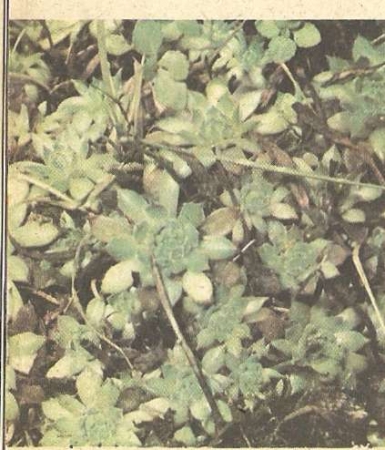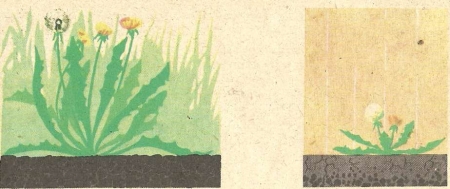The living conditions of plants.
No matter how distinguished plants from each other, they all need light, warm, water, air and mineral soles.
Shine - This is one of the most important conditions necessary for the life of plants. No wonder the green plants are called "children of the Sun".
Light is required by plants for the formation of chlorophyll and starch. Light is needed for normal growth of plants. Try to sharpen the plant, and the stalks will change it. They fade, become longer and thinner. This is especially noticeable on indoor plants in winter and on young trees growing under the canopy of the Dark Forest.
Heat It is also necessary for the life of plants. With a decrease in temperature to one degree frost, almost all life processes in the body of plants are freezing - breathing, growth, reproduction and others. In the spring, when the temperature rises, the activities of plant organs are reinforced. But and to heat, various plants belong in different ways. Some of them are heat-loving, others, on the contrary, quite cold-resistant.
Heat-loving plants - southerners by origin. It is corn, millet, beans, pumpkin, cucumbers, tomatoes and others.
Cold-resistant plants in the middle lane and in the north most. The seeds are capable of germinate at 1-3 degrees of heat. Shoots freely tolerate light spring frosts.
Water It is part of the cytoplasm and the cell juice of each plant cell. Without water, they cannot move on the plant and nutrients. From carbon dioxide and water in chlorophille grains, starch is formed in the light. In hot water, water evaporates with leaves, cooling plants. The life of plants without water is impossible.
Some plants, such as a risk, water lily, cube, live in water. Others, like cabbage, pumpkin, grow on land, but they need a lot of water. Third plants, for example, millet, could, cacti, need small amounts of water.
Air We need plants for breathing and formation of nutrient organic substances.
Breathe plants, like animals, consuming oxygen. Oxygen breathe cells of all organs of the plant. And if the soil, where seeds germinate or are roots, too dense, then seeds and roots can die, suffocating from lack of oxygen.
From the air for the formation of organic substances, the plants absorb and carbon dioxide, which penetrates through the dust of the leaves and lentils of the stems.
Mineral salts Enroll in the plant from the soil.

Fig. 112. MOLODOY.


The soil contains a variety of. Mineral salts, but plants most need nitrogen, phosphoric, potashsalt. In very small quantities there are also substances containing boron, manganese, iron and some other elements. Mineral salts are necessary for the formation of proteins.
How do the living conditions affect the growth and development of plants?
In the sunny May Days, many of you collected golden yellow dandelions, from which you can weigh heavy beautiful wreaths. And, probably, everyone noticed that the largest dandelions with high arrows carrying the inflorescence basket are found in the meadows and glades among thick high grass. In such places, you can sometimes find dandelions-giants whose leaves reach several tens of centimeters in length.
Most otherwise, dandelions growing on dry open areas with a compacted skinny soil look. Somewhere on a drowned path, between stones on a paved road or on a dry, stony slope they turn into dwarfs.
